The 170mm Scott Ransom 910 Is a Big Bike That Climbs like a Small Bike
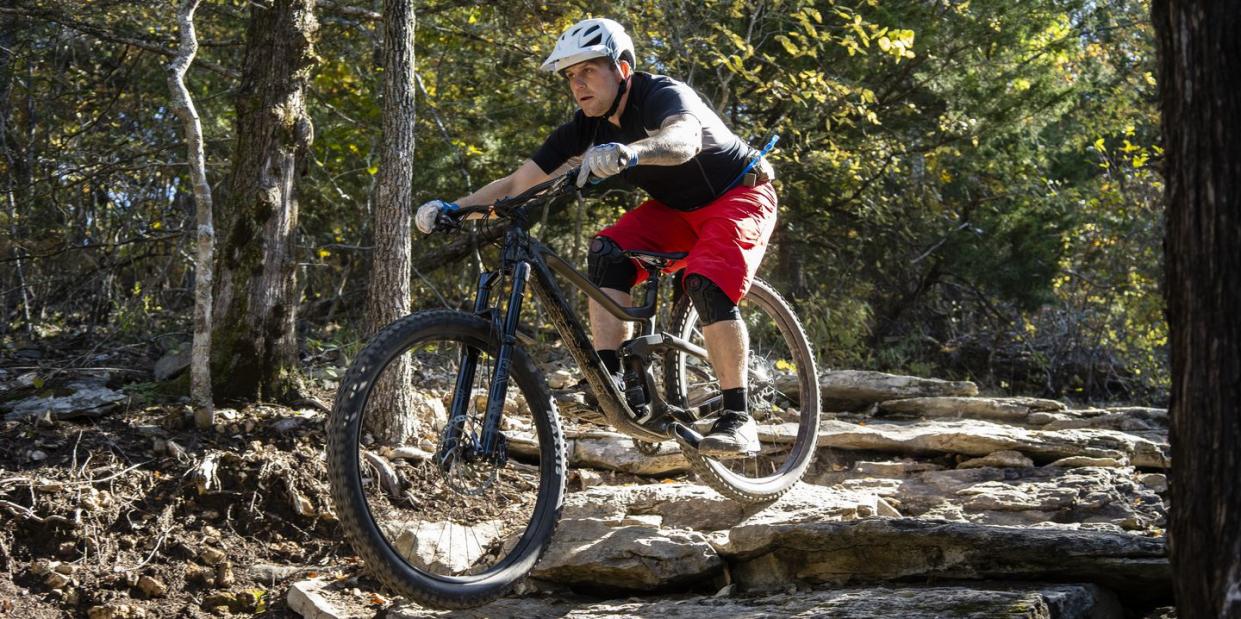
Price: $5,400
Weight: 31lb (claimed)
Style: Enduro
Travel: 170mm
Fork Travel: 170mm
Drivetrain: SRAM GX Eagle
Material: Carbon front triangle, aluminum rear
The right bike for: riders who like varied trails but prefer the bigger lines
A lot of 170mm 29ers, with all that travel and those slack angles, might feel too burly for tame trails. But not this Scott Ransom. It’s a fierce descender, but also manageable-fun even-on rolling and smoother terrain, and, for what it is, a superb climber.
The Ransom follows the modern geometry trend with a long reach, short chainstays, and when in descend mode, slack head tube angle, and a steep seat tube angle. But what gives the Ransom its ability to morph is Scott's Twinloc system. This system alters the properties of the shock and fork with a handlebar remote, and allows the rider to switch between three modes on the fly.
The three settings are Descend, Traction Control, and Lockout. Descend sets the shock to its longest-travel mode, sets the fork and shock dampers to their most sensitive setting. Traction Control makes the fork and shock's damping firmer for less movement, and also reduces the shock's air volume, reducing rear suspension travel, and prompting the bike to sit higher, which makes its angles steeper, and raises bottom bracket for better climbing. Lockout essentially shuts off the suspension so it won't move.
While in the Traction Control setting, the Ransom climbs efficiently and pedals well on flatter trails when you need a quick burst of speed. With the suspension fully open, the Ransom stays glued to the ground through large, choppy rock gardens and provides excellent stability over slippery and off camber root sections. In Descend mode, I was able to ride with confidence as it soaked up everything I came across, keeping me on my line. Lockout cancels out the suspension, and is great for climbing up roads or smooth doubletrack for another rip on the downhill track.
So while the Ransom is a big bike built for enduro, big-mountain riding, and bike park laps, it doesn't make you pay as great a penalty as many other 170mm bikes for its travel. When I rode from one section of trail to another, I could flick a switch and know that I had the best setting for what was to come.
The Ransom's Secret: Twinloc
Scott's Twinloc suspension system helps the Ransom feel like a more efficient climber, and helps it adapt as the terrain changes.
A three-position remote on the left side of the bar lets the rider switch between the Ransom's three modes: Descend, Traction Control, and Lockout. When the rider switches from Descend mode to Traction Mode, an air chamber inside the shock is closed off, which reduces effective rear travel to 120mm, and reduces sag, so the bottom bracket goes up by about 20mm, and makes the bike's angles1.5 degrees steeper.
These changes make the Ransom pedal more crisply, make it handle more sharply at climbings speed, and make it easier to weight the front wheel. The switch to Traction Mode also increases the fork and shock's compression damping (but does not change fork travel), which makes them feel firmer. With one more push of the Twinloc's lever, the fork and shock's compression damping is further increased to lockout; the bike's geometry remains as it is in Traction Mode.
When I started to ascend, Traction Mode provided a firmer pedaling platform and when I started to mash on the pedals on the harder climbs, I could appreciate the steeper seat angle as it made it easier for me to stay in a better climbing position. Once at the top of the climb, a simple push to put the Ransom in Descend mode, and I was flying down descents with full travel and without hesitation.
The Ransom also has a flip chip to adjust the bike's overall geometry. Angles change half a degree (64.5 or 65.0 degree head angle and 75 or 74.5 degree seat tube angle) while bottom bracket offset changes seven millimeters (height, 346.5 or 353.5 millimeters, drop minus 15 or minus 22 millimeters).
Adjustable Shock Progression
As if the Twinloc business wasn't complex enough, the Ransom 910's shock has another unique feature called Ramp Control. A two-position lever on the shock's air sleeve alters the Descend mode's air spring curve. The Linear setting offers a softer, deeper suspension feel (better for mellower and smoother trails), but in Progressive mode, the spring's ramp is more pronounced (better for bike parks and enduro racing).
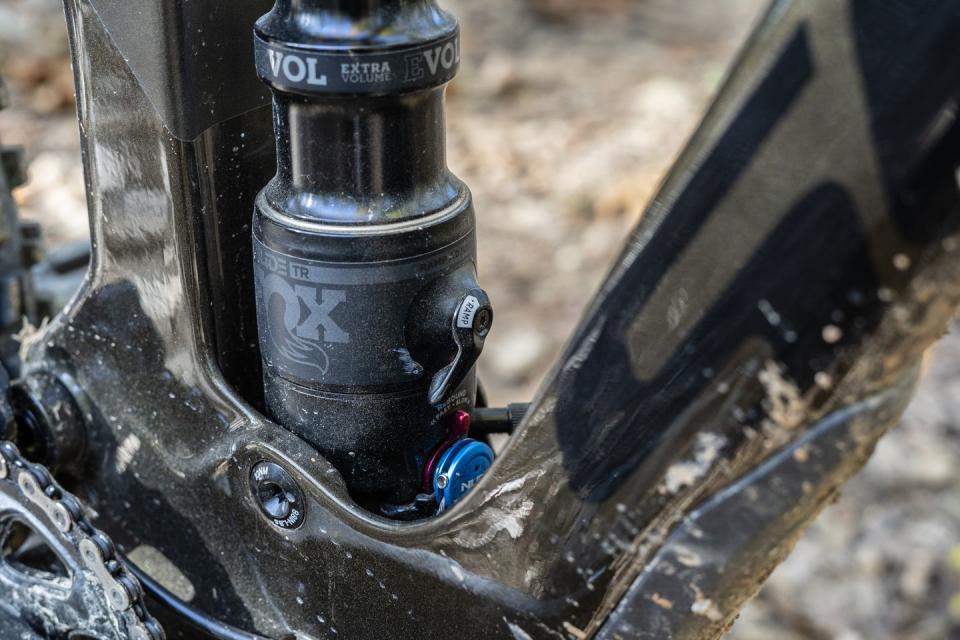
The expansive trail network of Northwest Arkansas where I tested the Ransom 910 features a wide variety of trails, so I often switched between the Progressive and Linear settings. When the descents were fast and rocky with big hits, I put the shock into Progressive mode so that the extra support at the end of the travel prevented me from bottoming out. When the trail mellowed out, I went into Linear mode for a more fluid ride feel.
It is possible to alter the spring curve on most bikes' air shocks. But doing so usually involves deflating the shock and sliding the air sleeve down the shock's body to add or remove spacers. This is not something riders are likely to often, much less a few times during a single ride. Scott's tool-free and simple system has a leg up for riders who like tinker with their suspension.
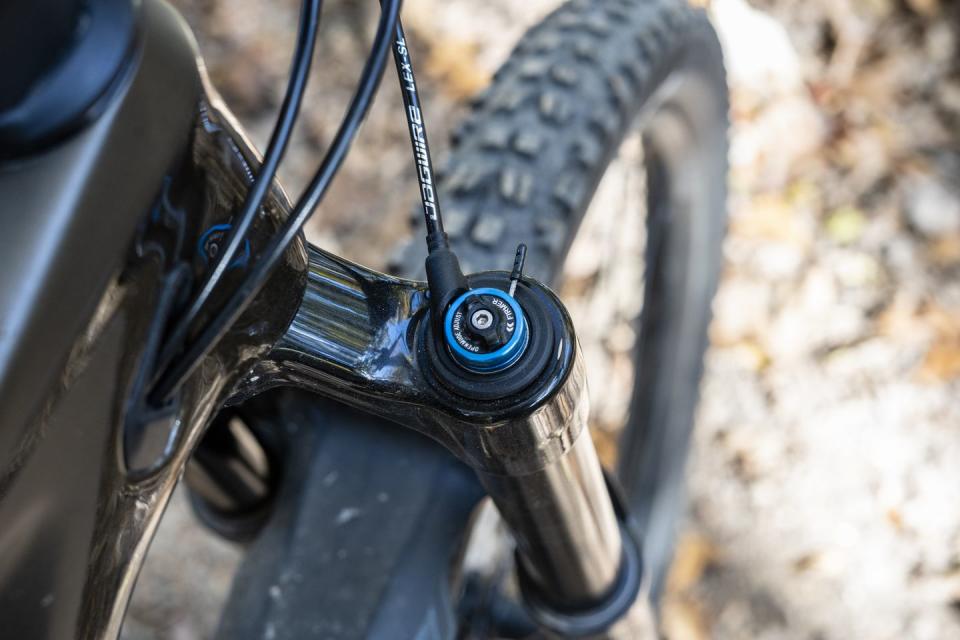
Both Wheel Sizes on the Same Frame
Scott offers its Ransom bikes with either 29 or 27.5 inch wheels. Scott's USA division brings in four models with the 29 inch wheels (Ransom 900 Tuned, Ransom 910, Ransom 920, Ransom 930) and two with 27.5-inch wheels (Ransom 700 Tuned, Ransom 720). No matter the equipped wheelsize, the Ransoms use the same frame, and parts are almost identical
While testing the 910 in Bentonville, I rode with another Bicycling editor who was aboard the 700 Tuned model. Though we were on different wheel sizes, our impressions of the Ransom were similar. We were impressed by the weight, handling, and ride quality of our bikes, and we both liked the feel of the rear suspension and the way the bike stuck to the ground. We agreed that the bikes didn't feel as big as we anticipated a 170mm bike would; they felt much smaller. Even when we cruised along flat trails with the shock fully open, the Ransom never felt wallowy or sluggish.
The different wheelsizes did grant our bikes separate personalites, though they were entirely in line with what you'd expect. His 27.5 Ransom was a little more maneuverable on flow trails, while I rode through rock gardens like they weren’t there.
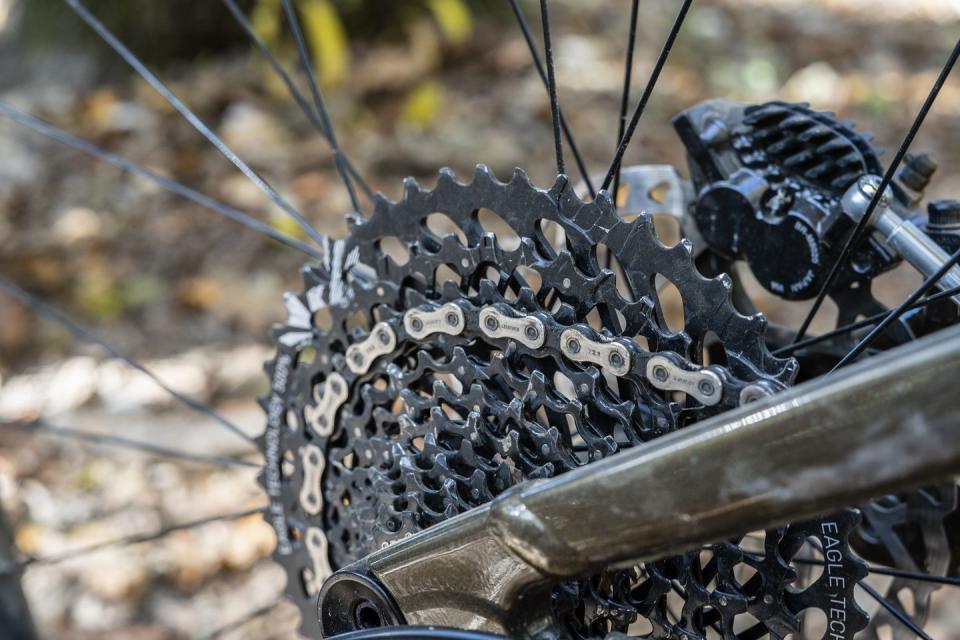
The Ransom 900 Family
There are four members of the Ransom 900 family. The top-level 900 Tuned ($7,500) has a full carbon frame with Factory-level FOX Nude TR EVOL shock with Ramp Adjust, SRAM XO1 drivetrain and Syncros Revelstoke aluminum wheels. The whole package weighs an impressively light 29.1lbs (claimed). The 910 ($5,400) I tested has a carbon front triangle with aluminum rear end, Performance-level FOX suspension, SRAM GX Eagle drivetrain and Shimano XT disc brakes with four-piston calipers. The 920 ($3,800) has an all aluminum frame with SRAM NX Eagle and Performance-level FOX suspension. The least expensive Ransom 930 ($3,000) has the same aluminum frame as the 920 and keeps the SRAM NX Eagle drivetrain, but swaps FOX suspension for a RockShox Yari SL Solo Air fork and X-Fusion Nude shock.
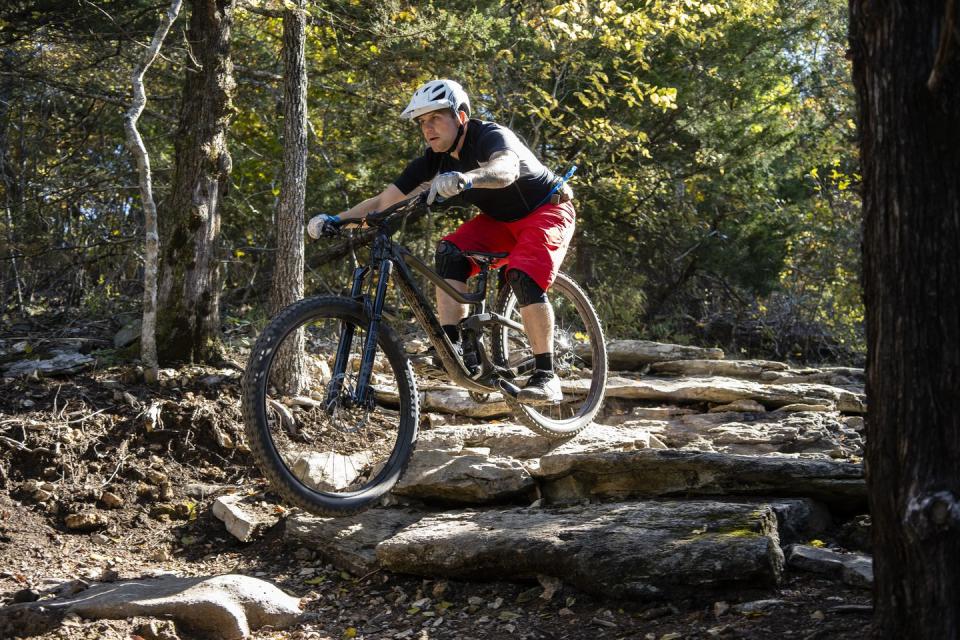
Ride Impressions
When I rolled out to begin my ride, I struggled with the bike's control layout. I both pushed the Twinloc remote when I wanted to toggle the dropper, and had to scramble to get the seatpost down when I hit the first technical sections of trail (my my colleague on the Ransom 700 had the same experience) .
But after a bit of time on the Ransom, I got my head sorted and mastered the bike's myriad levers. Once I did, I could flick my bike around on trails with flowy and jumpy lines, and once onto steeper, more rocky sections of trail, the Ransom stuck to the ground and rolled over obstacles so smoothly, it made them feel like flowy trails also.
It remained planted no matter how difficult the trails became and I was easily able to navigate my body around the bike to remain balanced and keep my speed high. On the gnarliest of trails is where the Ransom really excelled for me. I love riding rocks and doing it fast. On aggressive, choppy, and fast trails, it felt like the Ransom was pushing the rocks into the ground to smooth the line instead of me riding over them. It felt strong and stiff and it weaved along the fastest line keeping me on track without a hint of deviation. The Ransom was doing most of the work for me, but I still felt in total control.
The cool thing about the Ramp Control switch is it ensured I got the same feeling no matter what sort of trail I was riding. For me, it’s something I would love on every bike. Even at my fastest speeds, I felt only exhilaration and never the sense of panic that I feel when I realize I’m going too fast. The excellent balance of stability and maneuverability meant that it pushed my confidence to go faster, further, and more technical.
And that's why I say this: There are a lot of bike designed to be versatile across a diverse range of terrain. To climb well and descend well. And a lot of them are very good. But Ransom is the best I've found.
('You Might Also Like',)

